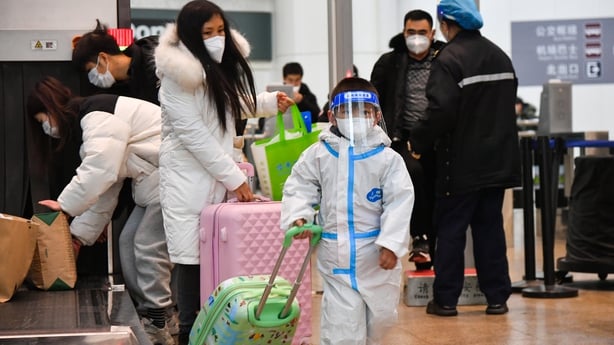China's health authorities have reported almost 60,000 Covid-related deaths in just over a month.
It is the first major death toll released by the government since the loosening of its virus restrictions in early December.
There were a total of 59,938 Covid-related deaths between 8 December and 12 January, Jiao Yahui, head of the Bureau of Medical Administration under the National Health Commission, told a press conference.
The figure refers only to deaths recorded at medical facilities, with the total toll likely to be higher.
It includes 5,503 deaths caused by respiratory failure directly due to the virus, and 54,435 deaths caused by underlying diseases combined with Covid, Mr Jiao said.
China has been accused of underreporting its number of virus deaths since abandoning its zero-Covid policy in early December.
Health officials insisted on Wednesday it was "not necessary" to dwell on the exact number.
Beijing had previously revised its methodology for categorising Covid fatalities, saying it would count only those who die specifically of respiratory failure caused by the virus.
But this had been criticised by the World Health Organization, which said the new definition was "too narrow".
WHO chief Tedros Adhanom Ghebreyesus had said the organisation was continuing to "ask China for more rapid, regular, reliable data on hospitalisation and deaths, as well as ... viral sequencing".
China's health officials said today the average age of those who died was 80.3 years old, with over 90% of fatalities above 65 years old.
Most suffered from underlying conditions, they said.
Millions of people over 60 years of age in China are unvaccinated.

Meanwhile, people are resuming travel ahead of the Lunar New Year, despite worries about infections, with air passenger volumes recovering to 63% of 2019 levels since the annual travel season began.
The rapid business recovery is challenging airlines' ability to ensure safety, and great attention to pandemic-related risks is needed, said Song Zhiyong, head of the Civil Aviation Administration of China.
The industry needs to "fully understand the special nature, and complexity of the Spring Festival migration in 2023", Mr Song said in a statement on Friday.
Since the start of the annual migration on 7 January, as Chinese return to their hometowns in preparation for the holiday set to begin on 21 January, flight passenger numbers stand at 63% of the 2019 figure before the pandemic, the aviation regulator said.
Infections are expected to surge in rural areas as hundreds of millions return home from big cities.
China reopened its borders on 8 January after having abruptly abandoned in December a strict anti-virus regime of frequent testing, travel curbs and mass lockdowns that had fuelled historic nationwide protests in late November.

